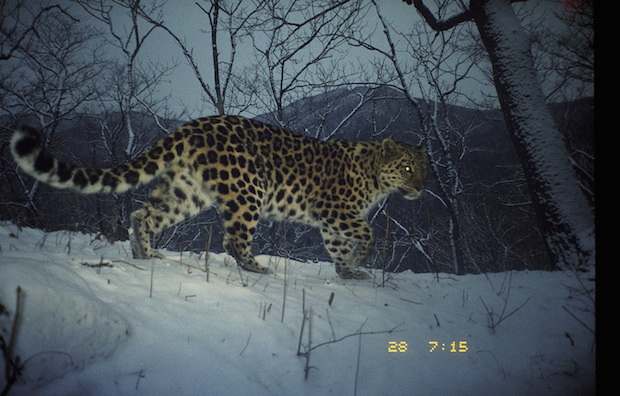Rare leopard back from brink of extinction in Russia
The population of one of the world's rarest leopards has more than doubled in the past eight years, showing that recent conservation efforts are beginning to bear fruit.
At least 57 Amur leopards now exist in Russia's Land of the Leopard National Park, up from just 30 counted in 2007, according the latest census data. An additional eight to 12 of the critically endangered leopards were counted in adjacent areas of China.
"Such a strong rebound in Amur leopard numbers is further proof that even the most critically endangered big cats can recover if we protect their habitat and work together on conservation efforts," said Barney Long, who leads Asian species conservation for World Wildlife Fund in the United States. "There's still a lot of work to be done in order to secure a safe future for the Amur leopard, but these numbers demonstrate that things are moving in the right direction."
The census, taken with camera traps spread out over more than 900,000 acres of primary leopard habitat, collected around ten thousand photographs. From there, scientists at WWF and the Russian Academy of Sciences used the images to identify nearly 60 individual animals, judging by the distinctive pattern of spots on the leopards' fur.
The Amur leopard was driven nearly to extinction due to poaching, forest fires, unchecked development and inbreeding, according to the Amur Leopard and Tiger Alliance. With its numbers below 40, an international effort several years ago launched a campaign to boost its protection.
In 2012, authorities created the Land of the Leopard National Park, which encompasses the Amur leopard's known breeding areas. The park extends across nearly 650,000 acres, and is also home to the endangered Amur tiger.
There are also plans to reintroduce Amur leopards to the Lazovsky Nature Reserve in Russia's Far East, an area where leopards disappeared approximately 30 years ago. The plan - drawn up by WWF, the Russian wildlife authorities and the Wildlife Conservation Society - would reintroduce some of the 200 leopards that have been captive bred in zoos across Europe, the United States and countries from the former Soviet Union.
Further out, efforts are underway to connect the populations in Russia and China by creating a Sino-Russian transboundary nature reserve.
